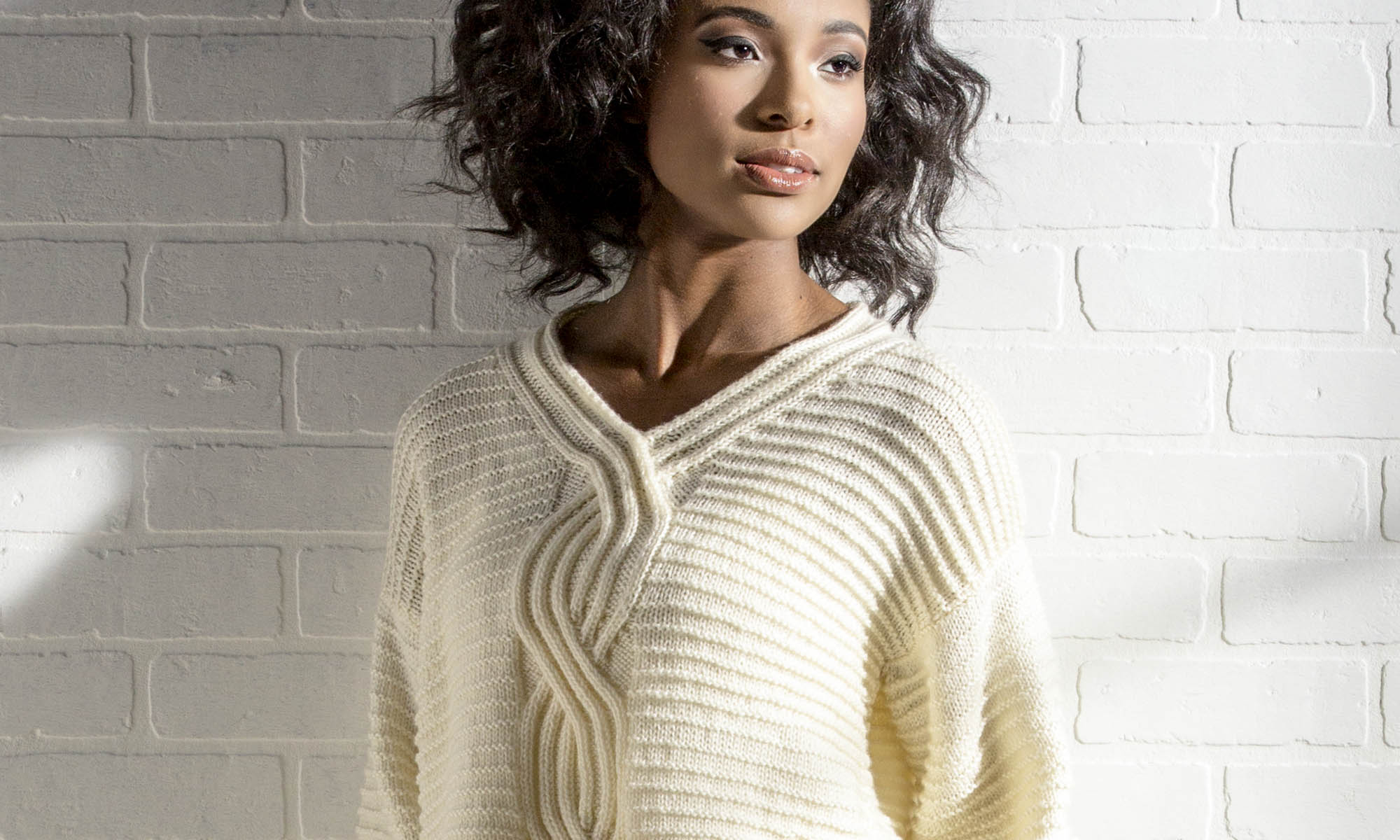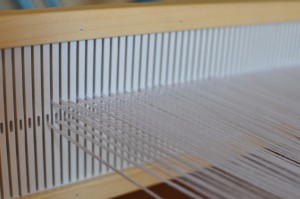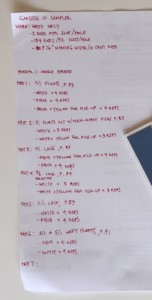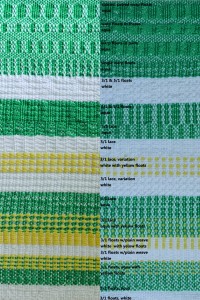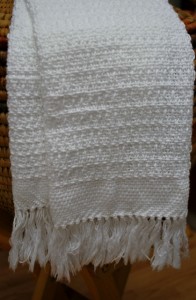Our last couple of projects have been completely reliant on colorful yarn and plain weave. Sometimes there is nothing more beautiful than simplicity. But I get bored and like to learn new tricks. Luckily, the 15″ Cricket is lots of fun and is capable of much more than plain weave. The first thing I did when considering where to begin in this adventure was to purchase a copy of Jane Patrick’s The Weaver’s Idea Book.
I knew I wanted to try some pick-up patterns, and I knew I wanted to make dishtowels with Garden 10, our high quality mercerized Egyptian Giza cotton. The finger controlled lace weaves in Chapter 2 really grabbed my attention, but I knew I needed a more firm fabric since my goal was towels. Chapter 3: Pick-up on the Rigid Heddle Loom was my destination. Over 50 pages of jam-packed information in this chapter, including helpful sidebar tips made me feel like had a friend by my side the whole time I was weaving. So, Step One: Warp the loom. Instead of flying by the seat of my pants like I did for the last 2 scarves, I decided to consult the handy Master Yarn Chart over at Interweave when deciding what sett to use for my towels. I found what I was looking for on page 1. As I said, I’m using Garden 10 which is a 10-weight crochet thread. The chart told me that for this weight of yarn, the sett ranges were from 16-24 epi. I decided to go with 20 epi by threading a 10-dent reed with 2 ends per dent.
I discovered that by threading through each slot and hole, I saved myself the extra step of having to sley the reed – yay! Step Two: Grab paper and pen and start recording. I’m pretty good at reading my knitting and crochet work, so I don’t always take notes as I’m going. Sometimes I’ll go back after my work and write patterns. But I’m a beginning weaver. And even if I was a pro, there’s no way I or anyone else could remember all the details of a piece of cloth. This is something I should have started from the very beginning: a weaving journal.
Helpful things to include are yarn specs, sett, number of ends, and weaving width. For this sampler, I also took notes on each pattern I did, colors, and number of reps. When I go to make my dishtowels, if there’s a particular piece of the sampler I want to use as an all-over design, I’ll know just how to recreate it. Step Three: Start weaving! I know I’m going to want to have hemmed edges for my towels, so the header was essential to my sampler. For the beginning header, I wove using a single strand of Garden 10 so my hem wouldn’t be too bulky. After about a 2″ header, I started in by sampling many of the patterns in Chapter 3. Each pattern required the use of a single pick-up stick, included with the Cricket. Using a pick-up stick is super easy! 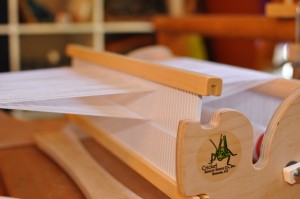
First, place the heddle in the down position. This raises the warp threads in the slots to the top, and the warp threads in the holes are lowered. You will be working with those slot warps that are on top. 
Then, working behind the heddle toward the back of the loom, pick up threads according to the pattern. For the first several patterns in my sampler, I did a simple 1 up, 1 down repeat. What this means, is that with the pick-up stick, you “pick up” or place the next thread on the stick, then place the stick over the next thread, and so on. 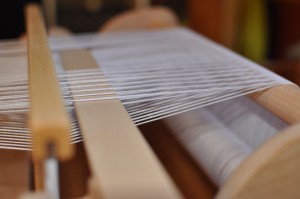
Here’s another angle.
And, here we are with the pick-up stick all ready to go. I must say, as a person who is often a poor planner, I’m pretty pleased with my sampler! By going through each of the exercises laid out by Jane, everything started making more sense – the mechanics of how the warp and weft work together and all the possibilities there are! Just like the warp, in order to have a balanced weave, I used doubled-up Garden 10 for the weft also. The aqua and white in the sampler are Garden 10, and the yellow supplemental weft in some of the patterns is Cotton Supreme. The worsted weight soft cotton adds a really nice pop. I may do some of this just on the ends of my towels! After finishing up my sampler, I sewed my hems and threw the whole piece into the washer and dryer.
On the left side of the above picture is the right side of the weaving, the right side of the graphic is the wrong side of the weaving. Again, because I’m making towels, I wanted to be sure that both sides looked good. Although I really love the look of the right side of the top few patterns, I feel like the floats on the back are going to be problematic for towels. About the first two-thirds of the patterns of this sampler (bottom to top) are weft floats, meaning the weft yarn “floats” over the surface. The top third of the patterns are warp floats, meaning it’s the warp yarn that does the floating. I found it quite intriguing that “warp floats in pairs” looked very similar on the right side as “3/1 and 5/1 floats” looked on the wrong side! Fun! And speaking of weaving with Garden thread, here are a couple of projects by Linda Davis of the Tail Spinner. 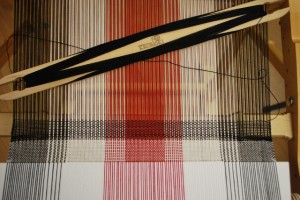
First we have an awesome plaid using Garden 10. Linda is also doing 20 epi (same as my sampler), but she’s using two 10-dent heddles in order to keep her ends single.
This next project uses Garden 5, a little heavier weight of our Garden thread. This was woven using a 10 dent heddle with plain-weave in the ends and a pick-up pattern in between. Nice work, Linda!
See ya next time with my finished Garden 10 towels!
